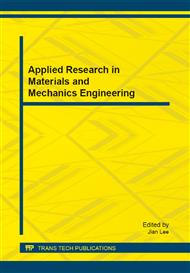p.3
p.7
p.13
p.19
p.24
p.30
p.35
p.39
Effect of Temperature and the Altitude of Filler on Biological Activated Carbon Performance
Abstract:
The removal of CODMn, UV254, nitrate nitrogen and turbidity have been investigated in this paper by a biological activated charcoal (BAC) reactor in different height of the filter and the in different temperature of 4-18°C and 19 to 26°C. The results show that the highest concentration of microorganism occurs in the top of the BAC. The microorganism concentration decreases from top to bottom. The backwash period at low temperature is 4-5 days by measuring permanganate index of the different packing height, which can be extended to 6-7 days at normal temperature. CODMn was not removed effectively by BAC with the average value of about 4.51mg/L. The removal rates CODMn at normal temperature and low temperature are 15.90% and 4.38% respectively. The removal of nitrate nitrogen is also influenced by temperature. Removal of turbidity and UV254 under different stages do not show significant changes, but UV removal shows no obvious changes at the temperature of 5-26°C.
Info:
Periodical:
Pages:
13-18
Citation:
Online since:
August 2014
Authors:
Keywords:
Price:
Сopyright:
© 2014 Trans Tech Publications Ltd. All Rights Reserved
Share:
Citation:


